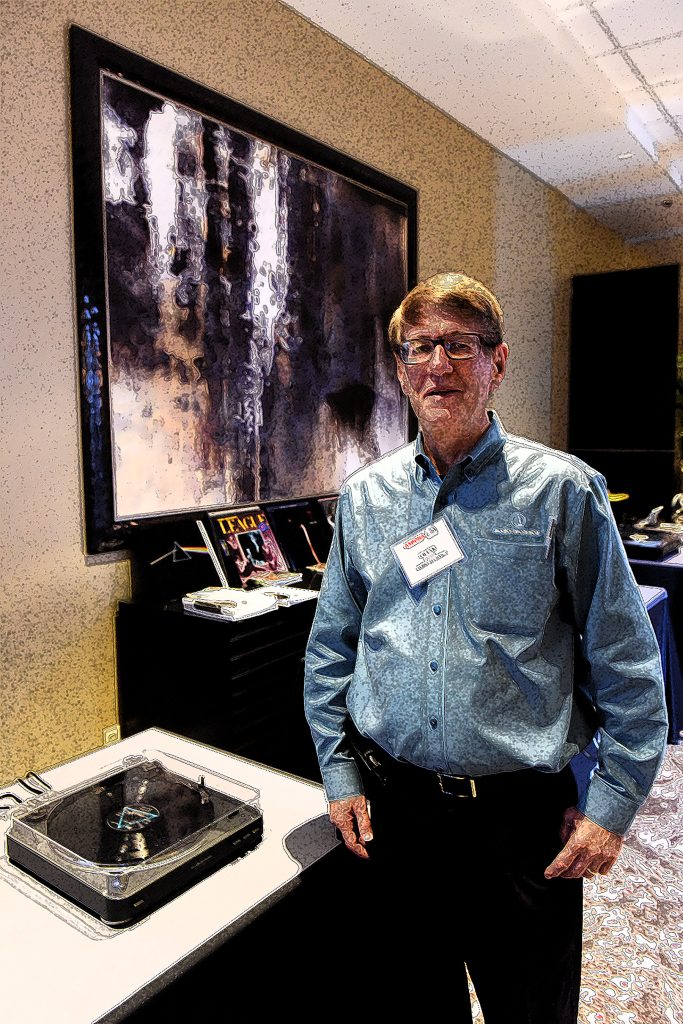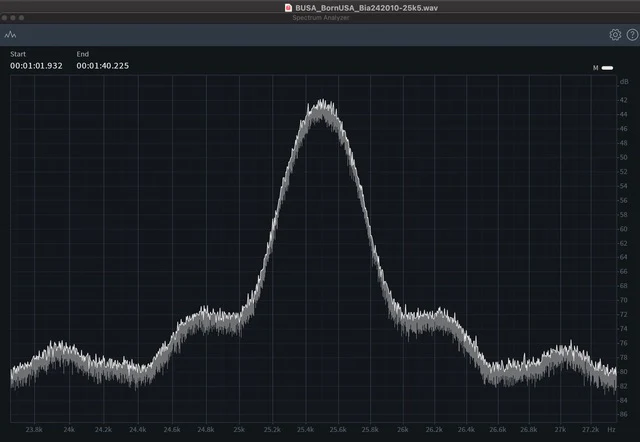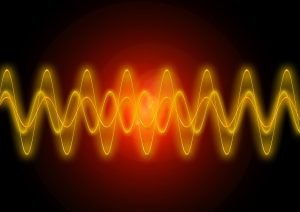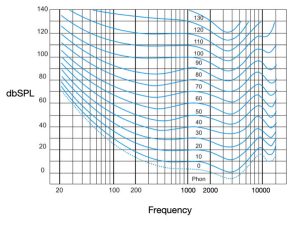Frank Doris is a valued colleague at Positive Feedback, a Senior Associate Editor here, as well, and Editor of Copper magazine, the publication of PS Audio. We republish the best of Frank's writing, with the kind permission of Copper.
This reflective essay was first published on October 16, 2023, in Copper, Issue 199, as his "Frankly Speaking" column.
Header image courtesy of Pixabay.com/Sebastien Marty. With a tip of the hat to China Crisis for inspiring the title.
I think we can all agree that no audio system is perfect. Perhaps the biggest challenge in the art of reproduced sound is getting the recording microphones and speakers as right as possible, since they're most susceptible to the fact that when you have a physical transducer, they're subject to inertia and hence the inability to reproduce the audio waveform accurately. (Maybe that's why I like the sound of ribbon mics and ribbon and planar magnetic drivers so much—they're low-mass.) And of course, with loudspeakers you have to deal with things like internal resonances and baffle diffraction, and the endless quest to match the low, mid- and high-frequency drivers and optimize crossover designs.
So, there are still "tells" in an audio system that cue us into the fact that we're not listening to the real thing, even though a good system can render a reproduction of the real thing that can be captivating. ("Good" also doesn't have to equal "expensive.")
And what is "reality" in reproduced music in the first place? The vast majority of recordings are multi-miked, compressed, EQ'd, effected, and created using monitor speakers that almost certainly aren't the same as ours.
Is audio "perfection" impossible then? Maybe, maybe not – I have faith in the power of technology to get us there, or at least ever-closer. But the laws of physics are what they are (unless…don't even get me started…), and the ear/brain is extraordinarily sensitive, so, what a challenge.
I wonder if perfection is even an ultimate goal. Perhaps we've grown accustomed to not only hearing audio colorations and distortions, but liking them, and even preferring them to a more "accurate" sound. I have some thoughts, most of them based on personal experiences.
"If it makes you happy, It can't be that bad..." Courtesy of Pixabay.com/5688709.
I think many people think of "coloration" as "inaccurate tonal balance." I confess, I like the tonal balance to be a little on the warm side. Conversely, if a system is too bright, I don't like it. Curiously, my upper midrange and high-frequency hearing loss hasn't diminished this preference—I'm not finding myself liking brighter systems as I get older. The brain compensates.
I think sometimes upper midrange and high-frequency emphasis is mistaken for "detail" or "resolution." Some audiophiles seem to like that, and that's fine.
Let's open the can of worms of whether tube electronics are more "accurate" than what some might call "sterile" or "cold" solid-state components—or if tubes add a pleasing harmonic distortion. I think we'll be debating this forever, measurements and 12AX7s in hand. I like any kind of design topology if it's done well—I don't care if it's a tube this or a Class D hybrid that—yet I certainly enjoy the perhaps-stereotypical characterization of tubes adding "warmth" and "dimensionality" to the sound. I've mentioned before in these pages that I once owned a Gordon Gow commemorative edition McIntosh MC275 power amplifier, and that thing made everything sound pretty. Was it "accurate?" No, and it didn't offer the last word in resolution of low-level information, but man was it lovely to listen to. I wish I still had it, but it caught on fire during one particularly festive Fourth of July listening session.
Sometimes tubes can be microphonic. I have an Audible Illusions Modulus 3 preamp, and microphonic tubes will give a roughness to the upper midrange and highs. (A shame, because gold-pin 6DJ8/6922 Made in Germany and "Bugle Boy" Made in Holland Amperex tubes sound heavenly in the Modulus 3 until they go microphonic, which in that preamp is rather quickly.) Yet on an audio forum one participant said they actually preferred slightly microphonic tubes in some applications, for the "liveliness" they bring to the sound.
Loudspeakers are perhaps the most obvious example of different design approaches. Horn-based loudspeaker designs have a very different "feel" than cone-driver or panel designs. Is one better than the other? Sigh…I wish I had a speaker that combined the dynamic ease and "jump" factor of horns with the tight punch of dynamic drivers in a sealed enclosure, and the spaciousness of panel speakers. Many speaker designs attempt to combine these various elements, and it's not surprising why their auteurs would take such a hybrid approach. Pick the imperfect loudspeaker you like the most (though dang, some of them are so good, especially in certain aspects, they're downright spooky).
What about digital distortions? I'm going to put this out there: are there certain types that are more pleasing to the ear than others, or do they all suck to a greater or lesser degree? I don't know. In fact, it's the first time I've considered the question in all my years in audio. (I can see legions of digital engineers rolling their eyes right now. Frankie, where ya been?) I have a Cambridge DAC Magic 200 DAC. It cost a modest $249, and I know it doesn't have the resolving power of a better DAC, yet like that old McIntosh MC275 it sounds smooth and warm and pretty, and not harsh and grating like some digital gear I've heard. Something is happening to the digital signal in that box to give the sound its friendly character, and I don't know if it's coloration imparted by the analog circuitry or what.
Conventional wisdom says that unwanted mechanical vibrations are bad. They'll affect sonic purity and "smear" the sound, and should be dealt with. (I doubt anyone will argue that turntables should be isolated from vibration, especially those of us with springy floors.) But surprise surprise, like all things audiophile, there's no 100 percent consensus on this. While received wisdom says you need to put speakers on spikes, others feel it will change the character of the bass adversely, or mess with the upper midrange and highs. The late, great Art Dudley (see my tribute in Issue 109) felt that isolation tweaks took away from the liveliness and character of the sound. And there seems to be no agreement as to whether to use cones or elastomer-type feet under audio components.
Frank Doris at a past AXPONA: a portrait in ink outline. (Photograph and image processing by David W. Robinson)
My take as always is to experiment and not be afraid to break the rules. I recently got an Audiolab 7000CDT CD transport (an excellent unit), and with everything I've tried so far, it sounds best on its own four feet, without resting on any aftermarket isolation products. Is its sound more accurate, or more colored? I don't care.
I confess: I've used cables as tone controls. Still do. There, I said it.
I enjoy the sound of my system, but it doesn't have a subwoofer. So, I'm not hearing everything there is to hear. Yet I don't feel like my rig is lacking in bass, even though it is in fact. If it came down to it, I could live happily ever after with a pair of Rogers LS3/5A bookshelf speakers. And all those Quad owners can't be wrong. Maybe we don't miss what we don't know we never had.
I sit a little too close to my speakers. And they're not toed in.
Sometimes I like the sound of a stock power cord rather than an aftermarket one. It depends on the component and the cord. I know, I know, there are those who think AC cords don't have a "sound," but I'm not one of them. If that makes me imperfect, then I'll enjoy the irony.
As an aside, whatever happened to tone controls? With the advent of high-end audio, they largely disappeared from audiophile preamps, based on the idea that the less circuitry in the signal, the purer the sound. But tone controls can be useful, either to compensate for deficiencies in recordings or room acoustics, for the Fletcher-Munson effect (the louder the music, the more we hear the bass; the reason for Loudness controls on receivers and other gear), or because you may simply like a less-accurate tonal balance. Some Golden Age preamps had separate bass and treble controls for each channel. I know, equalization introduces phase shift, so everything's a tradeoff. And DSP room correction can work wonders. Perhaps tone controls aren't the anathema they're viewed as among today's audiophiles. (And DSP room correction can work wonders.)
If it's a record I've heard many times, sometimes I like the clicks and pops. They bring back memories of specific times and places. When I visited the Haniwa booth at a show and they played "Goodnight Irene" from The Weavers Reunion at Carnegie Hall 1963, I closed my eyes and I was sitting with Harry Pearson in his listening room in 1985.
My main listening room has ugly 1980s or maybe even 1970s faux-wood paneling. Let's just say I've never seen it recommended as a good material for a listening room. But I'm afraid to replace it for fear things will sound worse. (That, and I'm too lazy to spend the month it would take to clear all my stuff out of the room.)
I'd venture to say that every Copper reader has had to make tough decisions about their systems based on budget. As Frank Zappa once said, my dreams are limited by the size of my bank account. 99-point-six-nines of us have to make compromises based on available (or more likely, unavailable) funds. And we're going to choose to live with, literally, the strengths—and the imperfections—we prefer.
And what is that indefinable something that makes an audio system sound like magic anyway? I've heard it in $100,000-plus speakers, and a Panasonic integrated amp I got in a garage sale for $3. For me, it has nothing to do with "accuracy," though there's certainly something magical about hearing Dave Davies' guitar amp on "Waterloo Sunset" sounding like it's right there, as I did on Michael Fremer's system one time. Magic is that elusive quality that makes you forget you're listening to reproduced sound, and the sound, though it can be even badly flawed, has that element of "rightness" about it. I throw my hands up in trying to really define it, but to paraphrase Dr. Watson, I know what is good when I hear it.
So, I guess what I'm trying to say, or could have said in far fewer words, is that instead of being frustrated that we can't have audio system perfection, let's embrace the imperfection. It can be pleasurable, even desirable, and loads of fun.









































